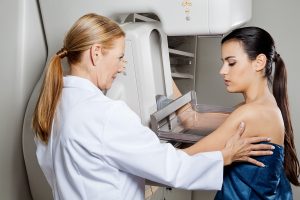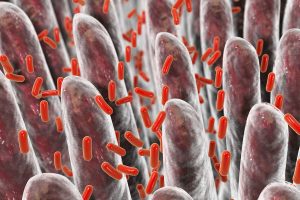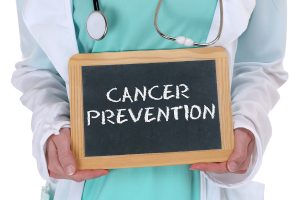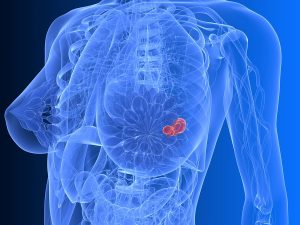Dr. David Zava, PhD gave a talk on breast cancer risks. His presentation took place at the 24th Annual World Congress on Anti-Aging Medicine (Dec. 9-11, 2016) in Las Vegas that I attended. The detailed title was: “The Role of Hormones, Essential Nutrients, Environmental Toxins, and Lifestyle Choices on Breast Cancer Risk”.
He pointed out that both estrogens and progesterone are safe hormones, as long as the doctor does not overdose them and keeps a hormone balance. Unfortunately many women in menopause have too much estrogen on board as the ovaries are still producing them, but there is a lack of progesterone, the moderating hormone that makes estrogen safe.
In the following I am summarizing Dr. Zava’s talk with regard to the essential messages, but leave away much of the highly technical detail of the presentation. This would dilute the message of this blog. I will include a few links for those who wish to read more details about the topic.
Balance between estrogen and progesterone
Most of her life a woman is used to cyclical hormone changes between estrogen and progesterone. When a woman no longer ovulates in premenopause and menopause there is a surplus of estrogen and a lack of progesterone. Having no ovulation means that there is no corpus luteum developing, which is where in the past progesterone production took place. This creates a disbalance where estrogen is dominating; it is called “estrogen dominance”.
This is a dangerous hormone disbalance, because the breast ducts experience a growth stimulus, but the modifying, calming effect of progesterone is missing. Mixed into this is that the stress hormone, cortisol also can make the effect of estrogen worse. On the other hand Dr. Zava showed slides from studies documenting replacement of missing progesterone with a skin progesterone cream (percutaneous bioidentical progesterone cream).
Progesterone concentration in breast lumps after progesterone cream applications
Plasma and breast tissue concentration of progesterone were measured in 40 premenstrual women. The diagnoses were breast lumps and the physicians arranged surgery for them. One group received progesterone cream treatment for 10 to 13 days; the other group was the placebo group. At the time of surgery the plasma (blood) values of progesterone were the same, but progesterone levels in breast tissue were more than 100-fold higher than the values from the placebo group who had received a neutral skin cream. The same experiment also showed that progesterone reduced the number of proliferating epithelial cells (experimental progesterone group). Estrogen on the other hand led to an increase of the number of proliferating epithelial cells (placebo group).
Progesterone cream applied to breasts of premenopausal women
Another example that Dr. Zava gave was a study where 25 mg of bioidentical progesterone cream applied directly to breasts of premenopausal women increased breast tissue progesterone 100-fold, while blood concentrations of progesterone remained the same. Again progesterone decreased the breast stimulation by estrogen of normal epithelium cells.
How to measure progesterone levels
Dr. Zava who runs the ZRT laboratory spent some time to explain how to measure progesterone in a physiological way. He said that these experiments and others that he also projected tell a clear story. Blood (serum) progesterone levels do not adequately reflect what tissue levels in a woman’s breasts are. On the other hand saliva hormone levels do give an accurate account of what breast tissue levels are like. A woman received 30 mg of topical progesterone application. She then had hourly progesterone levels in the serum and in the saliva done. The serum progesterone levels remained at around 2 ng/ml, while the saliva progesterone levels peaked 3 to 5 hours after the application. It reached 16 ng/ml in saliva, which also represents the breast tissue progesterone level.
Blood progesterone levels are unreliable
As a result, Dr. Zava said that the important lesson to learn from this is not to trust blood progesterone levels. Too many physicians fall into this trap and order too much progesterone cream, which leads to overdosing progesterone. In contrast, with salivary progesterone levels you see the physiological tissue levels, with blood tests you don’t. Dr. Zava said: avoid using venipuncture blood or urine in an attempt to interpret hormone test levels, as you will underestimate bio-potency and overdose the patient.
Historical failure of estrogen replacement therapy (ERT)
A review of breast cancer would not be complete without mentioning the Women’s Health Initiative (WHI). The U.S. National Institutes of Health (NIH) initiated this trial in 1991.
Researchers prematurely terminated Women’s Health initiative
The WHI ended suddenly in July 2002. The authors stated: “The overall health risks exceeded benefits from use of combined estrogen plus progestin for an average 5.2 year follow-up among healthy postmenopausal US women.” The study found a 41% increase in strokes, 29% increase in heart attacks, 26% increase in breast cancer, 22% increase in total cardiovascular disease, a doubling of blood clots. The recommendation made by this study was to discontinue PremPro.
Breast cancer in the Million Women Study from synthetic hormones
Another study that was mentioned was “Breast cancer and hormone-replacement therapy in the Million Women Study”. In this study postmenopausal women received HRT with synthetic hormones, either estrogen alone or estrogen mixed with a progestin (in British English “progestagen”). After 5 years estrogen alone had a 30% increased risk of developing breast cancer. HRT with an estrogen-progestagen mix had a 100% increased risk of developing breast cancer.
Huge difference between bioidentical hormones and synthetic hormones
Unfortunately in both of these human experiments the researchers used the wrong hormone substances, namely synthetic estrogens and synthetic progestins. They are NOT identical with natural estrogens and progesterone that a woman’s body makes. As long as the hormones used for hormone replacement therapy are chemically identical to the natural hormones, the body will accept them as they fit the natural hormone receptors in the body. It is the misfit of synthetic hormones that blocks the estrogen receptors or the progesterone receptors. You can readily see from the illustrations of this link that there is a fine balance between the workings of these receptors and there is absolutely no room for patented side chains that Big Pharma introduced into synthetic HRT hormones.
Individualizing bioidentical hormone prescriptions based on blood tests
The other problem of both these studies was that every woman was getting the same dose of hormones and that nobody measured their estrogen blood or estrogen saliva hormone levels. In retrospect the regulatory agencies should never have allowed these “hormones” to hit the market.
Breast cancer develops in three stages
Dr. Zava explained that it common knowledge for some time that breast cancer develops by going through 3 stages.
-
Initiation
First of all, damage to the DNA of one of the cells types in the breast is what starts the process in the development of breast cancer. This can be done by catechol estrogen-3,4-quinones as was shown by these researchers.
Aromatase inhibitors is useful to reduce estrogen in overweight or obese women where aromatase is present in fatty tissue. The reason obese women have more breast cancer is likely from the extra estrogen production from androgens. Aromatase converts these male hormones from the adrenal glands into estrogen.
Iodine/iodide alters gene expression, which reduces breast cancer development, but also slows down cell division in existing breast cancer. The authors suggested to use iodine/iodide supplements as adjuvant therapy in breast cancer treatment.
-
Promotion
Furthermore, the next step is that something has to promote the DNA mutation into becoming part of a cancer cell. Estrogen quinones are dangerous estrogen metabolites. They can form from catechol estrogens (other metabolites of estrogen) by reactive oxygen species. But selenium, a trace mineral can interrupt the formation of estrogen quinones, which stops the breasts cancer promotion process. A study from the Klang Valley, Malaysia showed that selenium showed a dose-response effect with respect to prevention of breast cancer; the more selenium in the food, the less breast cancer occurred.
-
Progression (includes invasion and metastases)
Finally, several factors can help the breast cancer cells to progress, grow bigger locally and eventually move into other areas of the body as metastases. Dr. Zava showed several slides where details of metabolic processes were shown and how changes in some of these would lead to progression of breast cancer. Estrogen excess is a common pathway to breast cancer. The key is to balance it with progesterone, supplements, remove anything that causes estrogen overproduction like obesity (via the aromatase pathway).
The fallacy of overdosing or underdosing
When estrogen is overdosed, it becomes aggressive as indicated before; it can initiate DNA mutations that can cause breast cancer. If it is under dosed, the lack of estrogen can cause heart attacks, strokes and osteoporosis. When estrogen is balanced with progesterone a postmenopausal woman feels best and she is protected from the negative effects of estrogen.
Measures that help prevent breast cancer
Supplement only with bioidentical hormones
When supplementing with bioidentical hormones, keep estrogen within physiological limits and don’t overdose. This can be measured through blood tests or saliva hormone tests. Your most important natural opponent of estrogen is progesterone, which is usually missing in menopause. Measure hormones using tests (progesterone only with saliva tests, estrogen either by blood tests or saliva tests). Don’t rely going by symptoms.
Progesterone to estrogen ratio
Keep the progesterone to estrogen ratio (Pg/E2) at an optimal range, which is in the 100- to 500-fold range. Measure the saliva hormone level of both progesterone and estrogen and calculate. Remember that progesterone serum levels are meaningless. The much higher progesterone level protects the postmenopausal woman from estrogen side effects. Here is a statement worth noting: “Until evidence is found to the contrary, bioidentical hormones remain the preferred method of HRT.” This was the conclusion of a study using bioidentical hormones, where the protection from breast cancer and heart attacks and strokes was also noted.
Eat more fiber containing foods and less beef
Increase fiber intake and reduce red meat consumption. This will eliminate conjugated steroid hormones in the stool. It also increases the sex hormone binding globulin in the blood, which limits the bioavailability of estrogens. Fiber absorbs bile toxins and removes them from the body.
Calcium supplement
Calcium-D-glucarate is a supplement that will decrease beta-glucuronidase. The estrogens were conjugated with the purpose to be eliminated, but beta-glucuronidase causes the conjugated estrogens to be reabsorbed.
Reduce breast cancer risk with probiotics
Probiotics likely stimulate the immune system and help reduce the risk of breast cancer.
No pollutants and toxic chemicals
Avoid toxins like petrochemical pollutants and toxic chemicals. Avoid trans fats. If toxic, heavy metals are present (arsenic, cadmium, lead, mercury) remove these. Some naturopaths use EDTA chelation to do this.
Other useful supplements
Supplements: sulforaphane (broccoli), EGCG (green tea), alpha-lipoic acid (antioxidant), cruciferous vegetables, resveratrol, selenium and iodide/iodine, N-acetyl cysteine-glutathione. All these supplements/nutrients will prevent estrogen to go to the “dark side”. The dark side is the formation of toxic 4-OH estrogen that could further be converted into catechol estrogen-3,4-quinones that can damage DNA and cause mutations.
Methylation of catechol estrogens
Increase methylation of catechol estrogens: vitamin B1, B6, B12 and folic acid. Methyl donors also are useful for this purpose: MSM (methylsulfonylmethane), SAMe, and Betaine.
Healthy lifestyle (diet , exercise) helps your immune system
Improve your diet (Mediterranean type), exercise moderately, reduce stress, and replace hormones in physiological doses as discussed under point 1 and 2.
Conclusion
Dr. David Zava, PhD gave an interesting talk at the 24th Annual World Congress on Anti-Aging Medicine (Dec. 9-11, 2016) in Las Vegas. Estrogens, when unopposed by enough progesterone, can cause mutations in breast tissue of women and cause breast cancer. He also reviewed two major clinical trials that utilized hormone replacement therapy (HRT). The problems with these were the synthetic estrogen hormones that caused breast cancer and the synthetic progestins that also behaved like estrogens (not like progesterone) and caused even more breast cancer. The lesson from this is that only bioidentical estrogens and progesterone work in hormone replacement for menopause. Also, the hormones balance each other as discussed under measures that help to prevent breast cancer. In addition there was a list of other useful supplements given that can be taken to reduce the danger of breast cancer.










